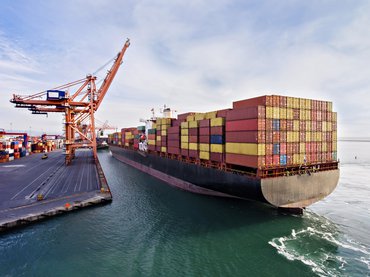Food makers were especially challenged in 2021 by supply chain interruptions and difficulties with obtaining the ingredients and packaging materials on which their operations rely.
Packaging in particular has been a sourcing challenge, said Julie Busha, CEO of The Busha Group, in July. She said her co-packer had to begin obtaining glass jars from Turkey because they could not obtain enough from their traditional U.S.-based supplier to package the company’s Slawsa condiment.
“We are expecting the situation with glass to last at least another year-plus,” she said at the time.
Other ingredients also become more costly to procure, in part because of truck and driver shortages and other supply chain disruptions. The Busha Group began paying double the usual amount for green bell peppers, for example, Busha said.
Nona Lim, founder of Nona Lim, which supplies bone broth, heat-and-eat noodle dishes and other products, said the disruptions in ocean freight were the biggest challenge when it came to sourcing packaging and ingredients. Freight costs, as well as costs for paper and packaging, had been increasing, she said.
Food retailers, meanwhile, diversified their sourcing operations and turned to new vendors to grapple with supply chain shortages during the past year.
Specialty grocers serving multicultural communities were especially hard hit as they dealt with rising costs related to importing goods.
“They don’t have technology like the big-box stores, and they don’t necessarily have a perfect handle on inventory,” said Boyede Sobitan, co-founder and CEO of OjaExpress, which works with small grocers serving immigrant communities in Chicago to help put their products online for delivery. “They’re running out of products, and the cost of importing and transportation when they do order products has skyrocketed … to the point that their customers can’t afford to buy them.”
In October, President Joe Biden and his supply chain task force hosted leaders from various U.S. ports and held a roundtable discussion with executives from Walmart, UPS, and Home Depot to address the issue.
At the time, the backlogs at U.S. ports were further strained by a lack of trucks available to take containers to their next destination, with shipping and logistics company CH Robinson’s CEO Robert Biesterfeld estimating that the ratio of shipments to available trucks was as high as 16 to one.
To ease the strain, ports began operating around the clock.
Months later, President Biden hosted retailers to discuss their outlook for the holiday shopping season, and the steps taken to meet consumer demand.
Some noted that the backlog at the ports of Los Angeles and Long Beach has decreased, and Walmart CEO Doug McMillon highlighted a 51 percent improvement in his company’s throughput at the ports.
Participants noted the strength of their supply chains, especially for seasonal items, and highlighted ways they had planned ahead, diversified their supplier base, sourced new products, and partnered closely with suppliers to be ready to meet the seasonal demand.
While things had improved for large retail chains, Carlos Castro, CEO of independent grocer, Todos Supermarket, spoke of the competitive disadvantages that independent retailers face related to obtaining products.
Related: Stew Leonard's Addresses Shoppers' Supply Related Fears; Retailers May Grapple With Thanksgiving Supply Shortages.

